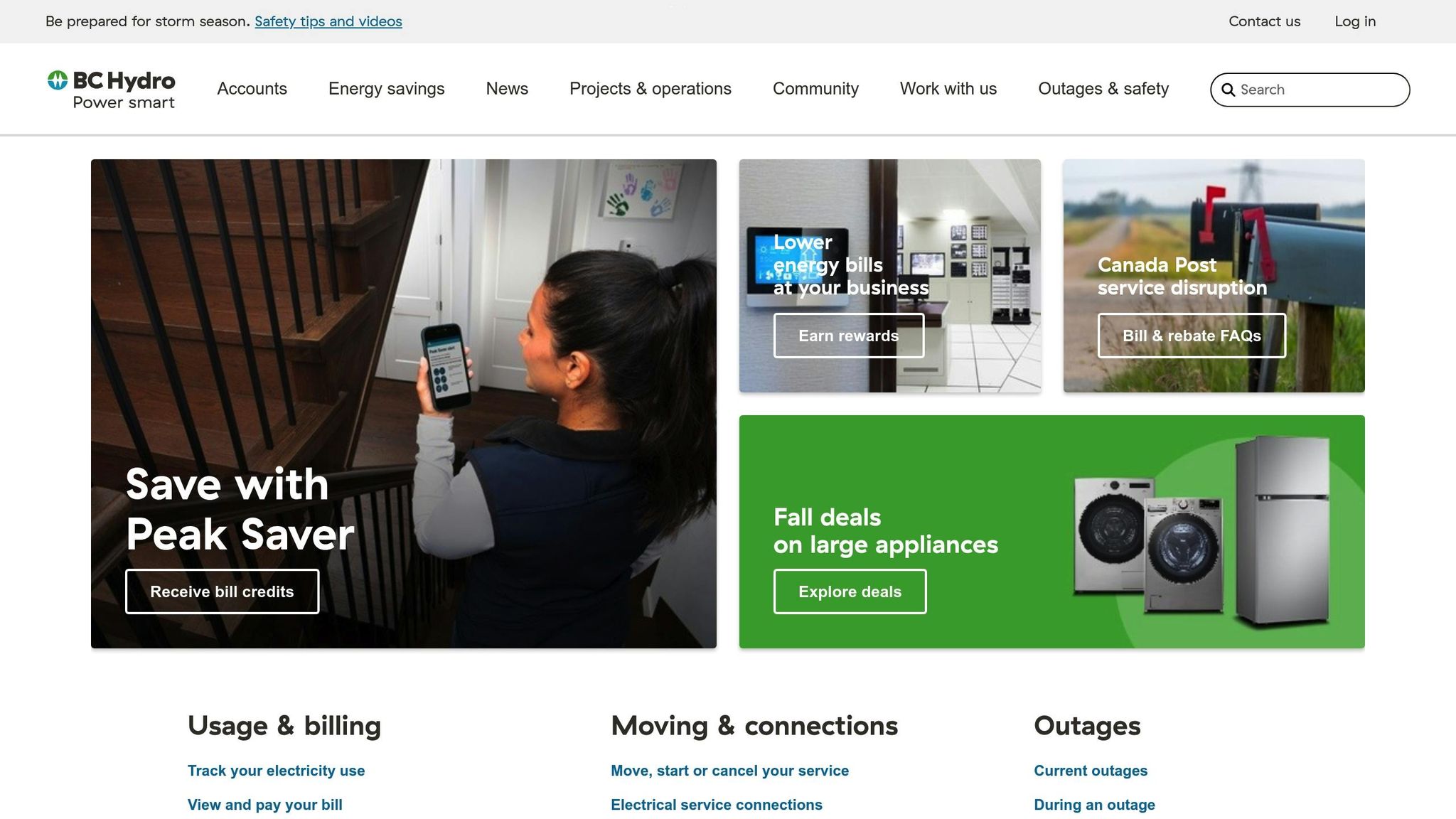British Columbia has permanently banned new Bitcoin mining projects from connecting to its power grid. This decision, part of the Energy Statutes Amendment Act (Bill 31) enacted on October 20, 2025, prioritizes electricity for industries with broader economic benefits. Existing mining operations can continue but are barred from expanding their grid usage. The move addresses rising energy demand and aligns with the province's commitment to clean energy initiatives. This follows a temporary moratorium introduced in 2022 and extended in 2024.
Key points:
- Why the ban? Bitcoin mining consumes large amounts of electricity, straining BC Hydro's grid, which focuses on renewable energy.
- Who’s affected? New mining projects are banned; current miners can operate but cannot scale up.
- Global trend: Other regions, like China and Kazakhstan, have also restricted crypto mining due to energy concerns.
- Industry shift: Miners are seeking renewable energy solutions or relocating to regions with fewer restrictions.
This marks a shift toward prioritizing energy for sustainable development while pushing crypto mining toward greener practices.
British Columbia to Permanently Ban New Crypto Mining Projects From Grid
Problem: Energy Demand and Grid Capacity Issues
British Columbia's energy grid is under significant strain, driven by growing electricity needs across various industries and technological advancements. This surge in demand is creating challenges for BC Hydro, the province's primary electricity provider.
Rising Electricity Demand
Electricity usage is climbing steadily. From manufacturing plants to data centers, and with urban populations on the rise, the demand for power has surged. BC Hydro is tasked with the complex job of maintaining a steady supply to homes, critical services, and major industries, all while ensuring service reliability.
High Energy Use of Bitcoin Mining
One of the biggest culprits in energy consumption is Bitcoin mining. These operations run nonstop, requiring substantial electricity to power the mining equipment and additional energy for cooling systems. This constant, heavy demand adds extra pressure to an already stretched grid.
BC Hydro's Clean Energy Focus

British Columbia's energy policies are shaped by its reliance on renewable hydroelectric power. BC Hydro has made it a priority to support initiatives that align with the province's low-carbon goals, such as expanding electric vehicle infrastructure and advancing renewable technologies. As part of this strategy, they’ve limited new grid connections for energy-intensive activities like Bitcoin mining, ensuring resources are directed toward projects that contribute to a cleaner energy future.
Solution: New Laws and Regulations
British Columbia has moved beyond temporary measures, establishing permanent legislation to address the energy demands tied to cryptocurrency mining. This new legal framework aims to prioritize grid capacity for essential services and industries that are critical to the economy. Here's what the new regulations entail:
Permanent Ban on New Grid Connections
On October 20, 2025, British Columbia enacted the Energy Statutes Amendment Act (Bill 31), which permanently prohibits new cryptocurrency mining projects from connecting to the power grid. This law builds on a temporary moratorium that was first introduced in December 2022 and later extended in 2024.
The Act gives the government the authority to reallocate electricity away from energy-heavy cryptocurrency operations. This ensures that the grid's capacity is preserved for more critical and impactful uses.
Prioritizing Key Industries
Beyond limiting cryptocurrency mining, the legislation focuses on reserving grid capacity for industries that contribute significantly to economic growth and job creation. By doing so, the government aims to support sectors that have a more tangible and lasting impact on the province's prosperity.
Impact on the Bitcoin Mining Industry
The permanent ban on new grid connections for Bitcoin mining in British Columbia has set firm boundaries on the industry's ability to expand within the province. While current mining operations can continue using their existing power allocations, they are now barred from accessing additional grid capacity for future growth.
Effect on Current Mining Operations
Existing Bitcoin miners in British Columbia can maintain their current grid connections, but they’re unable to scale up their operations. Mining expert Steven Pettigrove explains:
"Since British Columbia first introduced a temporary ban on new crypto mining connections to the grid in 2022, which was extended in 2024, the immediate impact is not likely to be great. Existing mining operations now have certainty that they still cannot obtain new power connections and continue to look elsewhere for new sites and plan knowing there is no possibility of a new connection."
In practical terms, this forces operators to focus on optimizing their output within their current capacity limits.
Reduced Future Investments
The ban makes British Columbia a less appealing destination for new Bitcoin mining projects. Without access to new grid connections, companies will naturally gravitate toward regions offering more flexible energy options. This has pushed operators to rethink their long-term strategies and seek opportunities in areas where expansion is still viable.
Industry Response to the Ban
As a result, many mining companies are adjusting their growth plans. They are actively exploring alternative locations with available grid capacity to support their future operations and expansion goals. This shift underscores the industry's need to adapt to changing regulatory landscapes.
sbb-itb-c71a7d0
Global Context: Worldwide Cryptocurrency Mining Regulation Trends
The decision by British Columbia to impose a permanent ban on new Bitcoin mining grid connections is part of a larger global effort to address the energy challenges posed by cryptocurrency mining. Around the world, regulators are taking a closer look at the energy consumption of Bitcoin mining, reflecting a broader push toward creating more sustainable practices in the crypto industry.
Other Countries Redirecting Energy from Crypto Mining
Several countries have implemented measures to manage the energy strain caused by crypto mining. For instance, China banned mining in many regions back in late 2021, which forced many operations to relocate. Kazakhstan followed suit by restricting new mining licenses and increasing electricity tariffs in 2022 to alleviate pressure on its energy grid.
Iran, on the other hand, has adopted temporary bans, such as halting mining during peak summer months when energy demand for cooling rises significantly.
Growing Focus on Green Blockchain Practices
Beyond regulations, the cryptocurrency industry is increasingly shifting toward environmentally conscious practices. Many mining operations are now turning to renewable energy sources, spurred by both regulatory demands and environmental concerns. Recent data shows a notable rise in the use of sustainable electricity in Bitcoin mining. Some major players in the industry are even forming partnerships with green energy providers to reduce emissions, with ambitious goals like achieving carbon neutrality by 2030. Ethereum’s transition from proof-of-work to proof-of-stake in 2022 marked a significant step, slashing its energy consumption and demonstrating how blockchain technology can evolve toward less resource-intensive methods.
Meanwhile, energy-efficient blockchain technologies are gaining traction as viable alternatives.
Governments are also stepping in to encourage sustainable practices. For example, states like Texas in the United States and countries like Paraguay offer incentives to miners who utilize surplus renewable energy. Additionally, nations rich in renewable energy resources, such as Iceland and Norway, are emerging as attractive hubs for eco-friendly mining operations. As the regulatory landscape continues to shift, these regions could play a key role in shaping the future of sustainable cryptocurrency mining.
Sazmining's Role in Promoting Renewable Bitcoin Mining

As governments around the world tighten regulations on energy-heavy cryptocurrency mining, companies like Sazmining are stepping up to show that the industry can adapt to stricter environmental standards without sacrificing profitability. Sazmining offers a model that aligns with these evolving policies, proving that mining can be both environmentally responsible and financially viable.
Renewable-Powered, Fully Managed Mining
Sazmining exclusively operates in data centers powered by renewable energy. Instead of competing for limited grid resources, the company strategically places its facilities in regions with an abundance of renewable energy. This thoughtful approach ensures that their operations don’t interfere with local electricity needs for homes and businesses, staying true to their renewable energy commitment.
On top of utilizing clean energy sources, Sazmining incorporates heat-recovery technology to repurpose thermal energy, further enhancing the sustainability of its mining operations.
Transparent Services and Customer-Centric Operations
Sazmining prioritizes transparency by offering real-time performance dashboards and a performance-based fee structure. Monthly rig fees range from $239 to $250, and the company guarantees 90% annual performance. There are no hidden markups on rigs or electricity costs, and customers receive direct Bitcoin payouts to their wallets. Whether you’re an individual miner or managing a large-scale operation, Sazmining provides scalable solutions tailored to your needs.
Supporting Global Environmental Goals
By focusing on renewable energy, Sazmining positions itself as a key player in addressing the regulatory challenges facing Bitcoin mining. In regions like British Columbia, where new mining projects are being banned due to environmental concerns, Sazmining's model shows how mining can actually contribute to clean energy investments. The company maintains strict environmental standards across its data centers, proving that Bitcoin mining doesn’t have to come at the expense of the planet.
Sazmining’s approach demonstrates that the industry can thrive under increasing regulatory pressure while paving the way for environmentally responsible practices. Their commitment to renewable energy and transparency offers a blueprint for sustainable progress in Bitcoin mining, ensuring the industry can grow in harmony with global environmental goals.
Conclusion: Balancing Regulation, Environment, and Innovation
British Columbia's decision to permanently ban new Bitcoin mining grid connections marks a major shift for cryptocurrency mining. This move reflects the growing tension between energy-hungry digital asset operations and the push for environmentally responsible practices. Instead of hindering progress, these regulations are steering the industry toward more thoughtful and sustainable approaches.
The ban highlights an important reality: mining operations that heavily depend on public grid resources are no longer practical in the long run. As more governments worldwide adopt similar restrictions, mining companies face a clear choice - adapt or risk becoming obsolete. This isn't just about following the rules; it's about ensuring the future of Bitcoin mining as a viable industry. These changes are paving the way for a new era of operational practices.
Interestingly, these regulations are acting as a catalyst for innovation. Companies are now compelled to explore renewable energy options, enhance efficiency, and develop business models that prioritize sustainability. What might have been a slow transition is now happening at a much faster pace, driven by necessity rather than convenience.
Globally, the divide in the industry is becoming clearer. Operations that stick with fossil fuels are facing increasing challenges, while those investing in cleaner, sustainable infrastructure are positioning themselves for long-term success. In this evolving landscape, early movers toward renewable energy and environmentally conscious practices are gaining a competitive edge.
For miners, adapting isn't just a strategy - it's essential. The ability to balance environmental responsibility with profitability is quickly becoming a baseline requirement for survival and growth. This shift signals that sustainability is no longer a secondary consideration; it's at the heart of the industry's future.
As regulatory momentum continues to build across the globe, it's clear that environmental concerns will play an even larger role in shaping cryptocurrency mining. Those who embrace renewable energy and sustainable practices now will not only lead the way but will help define the industry's path toward a greener future.
FAQs
Why has British Columbia decided to permanently ban new Bitcoin mining projects from using the power grid?
British Columbia has made the decision to permanently bar new Bitcoin mining projects from connecting to its power grid. The move stems from concerns over managing energy resources and maintaining grid capacity. By doing so, the province aims to prioritize industries that generate jobs and contribute to long-term economic growth.
This policy also mirrors a broader global push to tackle the environmental challenges posed by energy-intensive cryptocurrency mining. It ties in with the province’s dedication to responsible energy use and thoughtful management of its resources.
What does British Columbia’s permanent ban on new Bitcoin mining projects mean for existing miners?
The permanent ban on new Bitcoin mining projects in British Columbia blocks existing operations from applying for additional power connections to the grid. While miners can continue using their current energy allotments, this restriction limits their ability to expand or relocate within the province. As a result, they may need to consider alternative locations or strategies to sustain and grow their businesses.
This move highlights the province’s commitment to managing energy resources responsibly and aligning with global efforts to address the energy demands of cryptocurrency mining.
What options are Bitcoin miners exploring to address global energy restrictions and environmental challenges?
As global energy policies become more stringent and concerns about the environment continue to grow, Bitcoin miners are finding creative ways to adapt. A significant shift is happening toward renewable energy sources like solar, wind, and hydroelectric power. This move helps miners shrink their environmental impact while staying in line with tighter regulations.
Some miners are also exploring off-grid mining setups, tapping into energy from unconventional sources such as natural gas flaring or geothermal power. These approaches make use of energy that might otherwise go to waste.
On top of that, many are upgrading to energy-efficient hardware and fine-tuning their operations to cut down on energy use without sacrificing profitability. These adjustments not only help miners keep up with changing rules but also support broader goals for a greener future.

